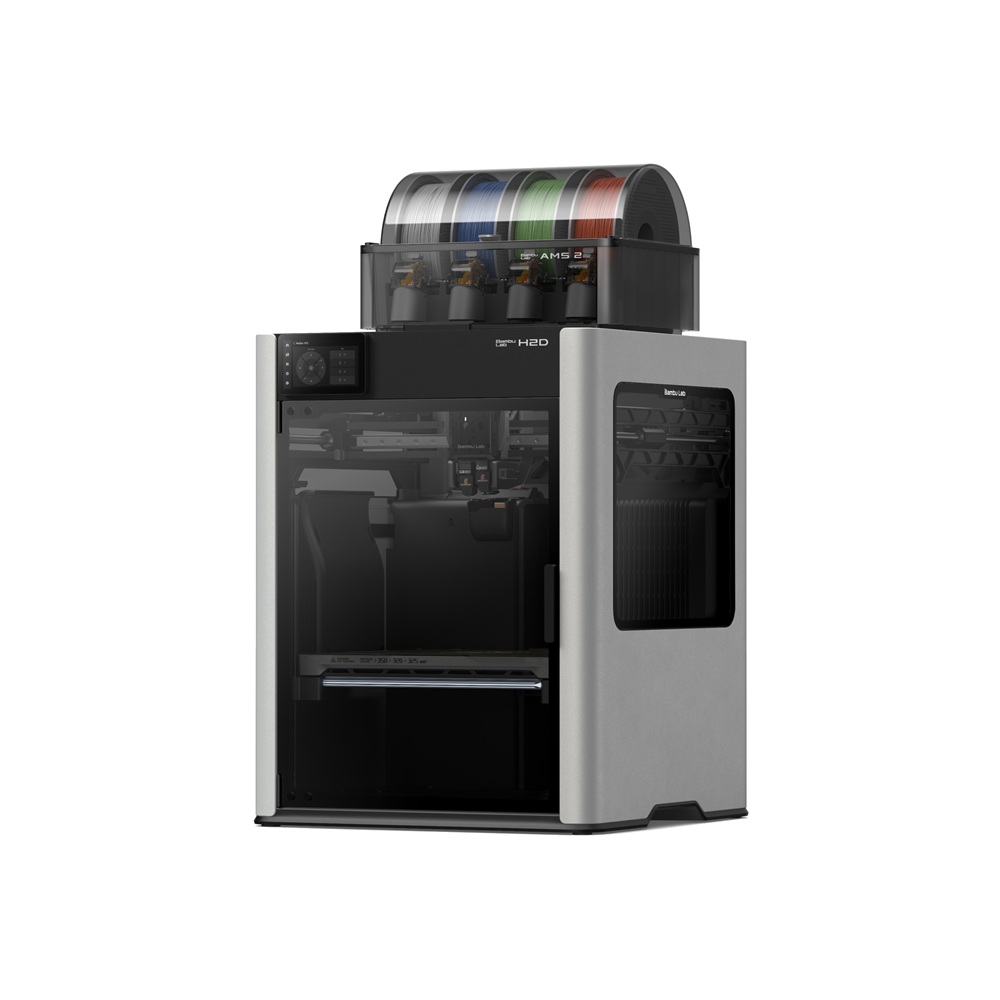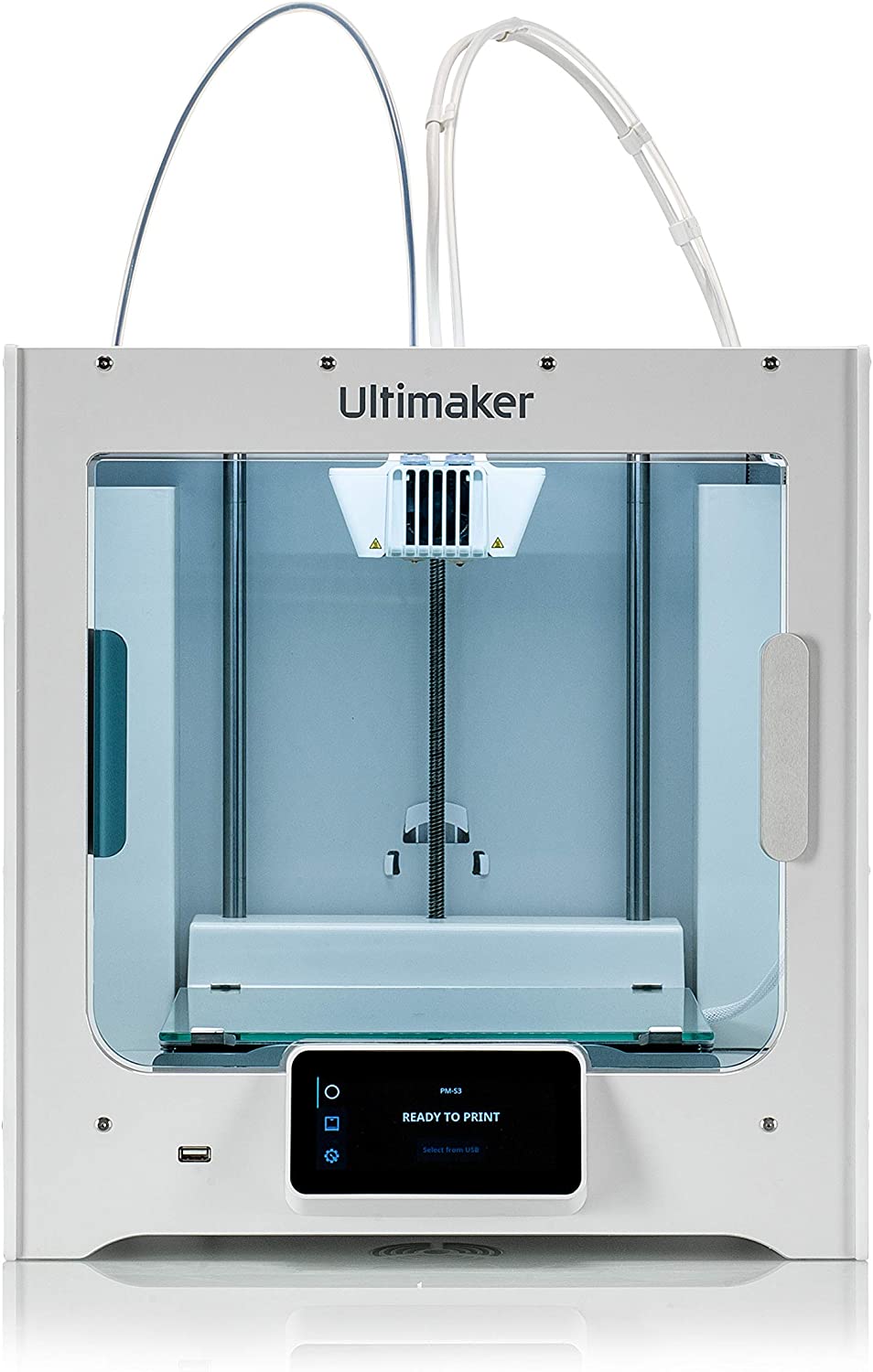Compare H2D vs S5
Comparison between the best 3D printers
Choose the best 3D printer at the best price. The cheapest 3D printers are here.
Buy a 3D printer here with 3D Fila.
 |
 |
|
| Model | H2D |
S5 |
| Printing Material | Filament | Filament |
| Buy Filament for Bambu Lab H2D | Buy Filament forUltimaker S5 | |
| Estimated price | $1899,00 | $6950,00 |
| Manufacturer | Bambu Lab | Ultimaker |
| Release Year | 2025 | 2021 |
| Print Volume [mm] | 350x320x325 | 330x340x300 |
| Printer Size [mm] | 492x514x626 | 495x585x780 |
| Weight [kg] | 42,3 | 20,6 |
| Power Loss Recovery | YES | YES |
| Enclosed printer | YES | YES |
| Bed Leveling | Automatic | Automatic |
| Filament End Sensor | YES | YES |
| Bed type | Heated | Heated |
| Power supply system | Direct Drive | Bowden |
| Standard nozzle | 0,4 | 0,4 |
| Maximum Nozzle Temperature [°C] | 350 | 280 |
| Maximum Bed Temperature [°C] | 120 | 140 |
| Maximum printing speed [mm/s] | 600 | 80 |
| Filament holder | YES | YES |
| Camera for supervision | YES | YES |
| Recommended filaments | PLA, PETG, ABS, ASA, TPU, PVA, Nylon (PA) | PLA, ABS, PETG, PC, Nylon, Tritan |
| Recommended slicers | Bambu Studio | Cura |
| Maximum Resolution [mm] | 0,01 | 0,1 |
| Processor | ||
| Display | Touchscreen 5'' | Display touchscreen 4,7'' |
| Power Supply | 110/220V / 500W | |
| Connectivity | Wifi, Bambu bus, Cartão SD | USB / Wi-Fi |
| Operating systems | Windows, Mac, Linux | Windows, Mac, Linux |
| Date of registration in the system | 2025-03-31 | 2022-11-08 |
| Release date | 2025 | 2021 |
| Extra features | Bambu Labs H2D combines high-speed 3D printing with a chamber heated up to 65 °C, dual extrusion with automatic nozzle switching, an AMS for filament drying and exchange, and AI sensors that detect failures. It offers optional laser and digital cutting capabilities, features intelligent calibration through computer vision, vibration control, enhanced fire safety, and real-time camera monitoring. | The Ultimaker S5 stands out for its easy loading and unloading of materials, automatic bed leveling and excellent print quality with resolutions from 60 to 400 microns. It has dual extruders, interchangeable print cores, advanced connectivity with Wi-Fi and LAN, and intuitive software. It includes a Wi-Fi camera for monitoring, a removable glass bed, and a large build volume, making it ideal for professional and creative environments. |
| Support for multiple colors and materials (AMS and CFS) | YES | NO |
Notes * |
||
| Cost-benefit | 7 / 10 | 2 / 10 |
| Hardware | 8 / 10 | 3.6 / 10 |
| Tela | . | . |
| Print volume | 4 / 10 | 4 / 10 |
| Performance | 5 / 10 | 1 / 10 |
Conclusion |
| In conclusion, when comparing the Bambu Lab H2D and the Ultimaker S5, it is clear that each printer caters to different user needs and budgets. The H2D, with its advanced features, high printing speeds, and greater material capacity, emerges as a more futuristic option suited for high-demand applications. Its cost, while on the higher end, reflects its extensive capabilities, such as AI-assisted features, real-time monitoring, and superior temperature tolerance, making it a strong contender for professionals seeking efficiency and innovation. On the other hand, the Ultimaker S5, while significantly more expensive, focuses on delivering reliable print quality and ease of use, which makes it suitable for users in professional settings who prioritize print quality over speed. Its well-established capabilities and intuitive software cater to a different segment of users who may not require the extensive features of the H2D but still demand reliability and precision. Ultimately, the choice between the two will depend on whether the user values advanced technology and speed at a higher price point or whether they prefer a proven, reliable printer that excels in quality for a more substantial investment. Buyers should weigh their specific needs—whether it’s speed, functionality, or print quality—against their budget to find the best fit for their 3D printing projects. |

